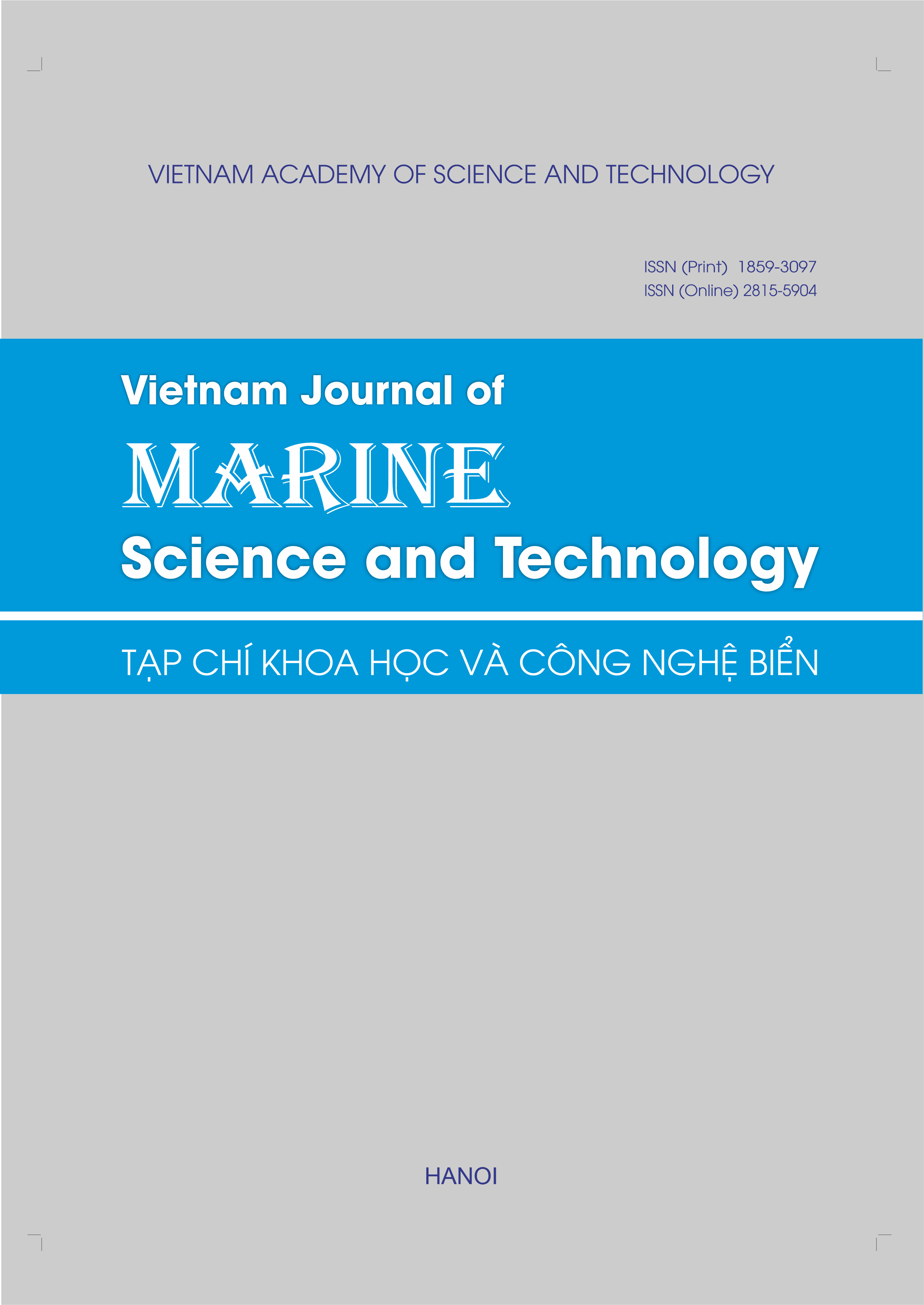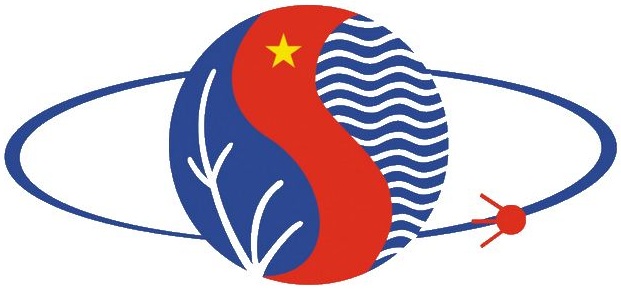Application of GIS and remote sensing in detecting coastal reclamation in the coastal areas of Hai Phong - Ha Long from 1990 to 2020
Author affiliations
DOI:
https://doi.org/10.15625/1859-3097/20808Keywords:
Coastal reclamation, coastline change, coastal reclamation index, Hai Phong, Ha LongAbstract
Coastal reclamation transforms coastal areas into usable land for urban, agricultural, and industrial purposes. This study evaluates the status of coastal reclamation from 1990 to 2020 in the Hai Phong - Ha Long coastal area using high and medium-resolution satellite images and GIS techniques. The findings revealed a significant increase in reclamation activity, with 900 hectares reclaimed in 1990–2000, 3,161 hectares in 2000–2010, and 3,434 hectares in 2010–2020. Over different periods, the objectives of reclamation activities shifted. In 1990-2000 and 2000–2010, the focus was primarily on facilitating aquaculture and mangrove cultivation. However, from 2010 onwards, the focus shifted to the developing industrial parks, urban areas, and recreational spaces. Coastal reclamation activities have led to changes in the coastline’s characteristics, including length and shape alterations. Over 30 years, the total coastline length has increased by 58.4 km, with the proportion of artificial coastlines increasing by 33.5%. Additionally, coastal reclamation has converted significant areas of mangrove forests, tidal flats, and shallow coastal waters into new land. Therefore, strong policies and integrated coastal zone management are needed to ensure sustainable development and preserve coastal ecosystems.
Downloads
References
[1] D. Sengupta, Y. R. Choi, B. Tian, S. Brown, M. Meadows, C. R. Hackney, A. Banerjee, Y. Li, R. Chen, and Y. Zhou, “Mapping 21st century global coastal land reclamation,” Earth's Future, vol. 11, no. 2, 2023.
[2] OSPAR Commission, Assessment of the environmental impact of land reclamation, Biological Diversity of OSPAR Commission, Publication No. 368/2008, 35 p., 2008.
[3] S. Y. Chee, M. L. Tan, Y. L. Tew, Y. K. Sim, J. C. Yee, and A. K. M. Chong, “Between the devil and the deep blue sea: Trends, drivers, and impacts of coastal reclamation in Malaysia and way forward,” Science of the Total Environment, vol. 858, p. 159889, 2023.
[4] R. Glaser, P. Haberzettl, and R. P. D. Walsh, “Land reclamation in Singapore, Hong Kong and Macau,” GeoJournal, vol. 24, pp. 365–373, 1991.
[5] N. H. M. Ghazali, “Coastal erosion and reclamation in Malaysia,” Aquatic Ecosystem Health & Management, vol. 9, no. 2, pp. 237–247, 2006.
[6] M. Martín-Antón, V. Negro, J. M. del Campo, J. S. López-Gutiérrez, and M. D. Esteban, “Review of coastal land reclamation situation in the world,” Journal of Coastal Research, vol. 75, pp. 667–671, 2016.
[7] W. Chen, D. Wang, Y. Huang, L. Chen, L. Zhang, X. Wei, M. Sang, F. Wang, J. Liu, and B. Hu, “Monitoring and analysis of coastal reclamation from 1995–2015 in Tianjin Binhai New Area, China,” Scientific Reports, vol. 7, no. 1, p. 3850, 2017.
[8] C. Xu, L. Pu, F. Kong, and B. Li, “Spatio-temporal change of land use in a coastal reclamation area: A complex network approach,” Sustainability, vol. 13, no. 16, p. 8690, 2021.
[9] W. Wu, M. Zhang, C. Chen, Z. Chen, H. Yang, and H. Su, “Coastal reclamation shaped narrower and steeper tidal flats in Fujian, China: Evidence from time-series satellite data,” Ocean & Coastal Management, vol. 247, p. 106933, 2024.
[10] H. Zhang, Y. Xiao, and Y. Deng, “Island ecosystem evaluation and sustainable development strategies: A case study of the Zhoushan Archipelago,” Global Ecology and Conservation, vol. 28, p. e01603, 2021.
[11] G. Yu, Y. Liao, Y. Liao, W. Zhao, Q. Chen, J. Kou, and X. Liu, “Research on integrated coastal zone management based on remote sensing: A case study of Guangxi Beibu gulf,” Regional Studies in Marine Science, vol. 44, p. 101710, 2021.
[12] B. Tian, W. Wu, Z. Yang, and Y. Zhou, “Drivers, trends, and potential impacts of long-term coastal reclamation in China from 1985 to 2010,” Estuarine, Coastal and Shelf Science, vol. 170, pp. 83–90, 2016.
[13] F. Yan, X. Wang, C. Huang, J. Zhang, F. Su, Y. Zhao, and V. Lyne, “Sea reclamation in mainland China: process, pattern, and management,” Land Use Policy, vol. 127, p. 106555, 2023.
[14] Nguyen Van Cu, Coastal mudflats of Northern estuaries of Vietnam. Hanoi: Publishing House for Science and Technology, 2006, 258 p. [in Vietnamese].
[15] T. H. Pham, K. N. Cuong, and V. U. Dinh, “Investigation of shoreline changes in the coast of Haiphong Province from 1987 to 2018,” VNU Journal of Science: Earth and Environmental Sciences, vol. 37, no. 4, pp. 33–42, 2021.
[16] T. V. Dien, T. D. Thanh, and N. V. Thao, “Remote sensing and GIS applications for monitoring coastal erosion in Red River Delta,” Collection of Marine Environment and Resources, vol. 8, pp. 117–126, 2001. [in Vietnamese].
[17] N. V. Cu, N. T. Son, D. T. Thao, and N. H. Son, “Real changes of coastline from Hai Phong to Ninh Binh and exploitation of its resources,” Hue University Journal of Science (HU JOS), vol. 126, no. 7A, pp. 55–65, 2017. [in Vietnamese].
[18] E. Parwati, S. W. Adawiah, P. M. Afgatiani, and S. Budhiman, “TSS analysis using remote sensing data to detect reclamation activity in Jakarta Bay,” AIP Conference Proceedings, vol. 2941, no. 1, 2023.
[19] V. H. Ha, T. T. Lien, N. T. Anh, N. C. Minh, and P. M. Duong, “The sea reclamation situation in Asian coastal city and experience lessons for Vietnam,” Vietnam Journals Online, no. 3, 2022. [in Vietnamese].
[20] F. J. Aguilar, I. Fernandez-Luque, M. A. Aguilar, A. M. García Lorca, and A. R. Viciana, “The integration of multi-source remote sensing data for the modelling of shoreline change rates in a Mediterranean coastal sector,” International Journal of Remote Sensing, vol. 40, no. 3, pp. 1148–1174, 2019.
[21] A. Misra and R. A. Balaji, “A study on the shoreline changes and land-use/land-cover using remote sensing and GIS along the south Gujarat coastline, India,” Procedia Engineering, vol. 116, pp. 381–389, 2015.
[22] Y. Zhang, D. Li, C. Fan, H. Xu, and X. Hou, “Southeast Asia island coastline changes and driving forces from 1990 to 2015,” Ocean & Coastal Management, vol. 215, p. 105967, 2021.
[23] B. Q. Dung and U. D. Khanh, “Calculation of Vietnam’s coastline length (mainland) based on topographic map system at scale 1/50,000,” Vietnam Journal of Marine Science and Technology, vol. 16, no. 3, pp. 221–227, 2016. [in Vietnamese].
[24] T. D. Pham and K. Yoshino, “Mangrove mapping and change detection using multi-temporal Landsat imagery in Hai Phong city, Vietnam,” in The International Symposium on Cartography in Internet and Ubiquitous Environments 2015, Tokyo, 17th–19th March, 2015, pp. 17–19.
[25] D. T. T. Huong, N. T. T. Ha, G. Do Khanh, N. Van Thanh, and L. Hens, “Sustainability assessment of coastal ecosystems: DPSIR analysis for beaches at the Northeast Coast of Vietnam,” Environment, Development and Sustainability, vol. 24, no. 4, pp. 5032–5051, 2022.
[26] T. D. Thanh, D. V. Huy, and T. D. Lan, “Development of the tidal flood plain in Red River Delta,” J. Sciences of the Earth, vol. 3, no. 18, pp. 50–59, 1996.
[27] T. D. Thanh, D. V. Huy, and T. D. Lan, “Development of the tidal flood plain in Red River Delta,” Journal of Sciences of the Earth, vol. 3, no. 18, pp. 50–59, 1996.
[28] K. Li, X. Liu, X. Zhao, and W. Guo, “Effects of reclamation projects on marine ecological environment in Tianjin Harbor Industrial Zone,” Procedia Environmental Sciences, vol. 2, pp. 792–799, 2010.
[29] D. Sengupta, R. Chen, and M. E. Meadows, “Building beyond land: An overview of coastal land reclamation in 16 global megacities,” Applied Geography, vol. 90, pp. 229–238, 2018.
Downloads
Published
How to Cite
Issue
Section
License
Copyright (c) 2025 Vietnam Academy of Science and Technology

This work is licensed under a Creative Commons Attribution-NonCommercial-NoDerivatives 4.0 International License.








